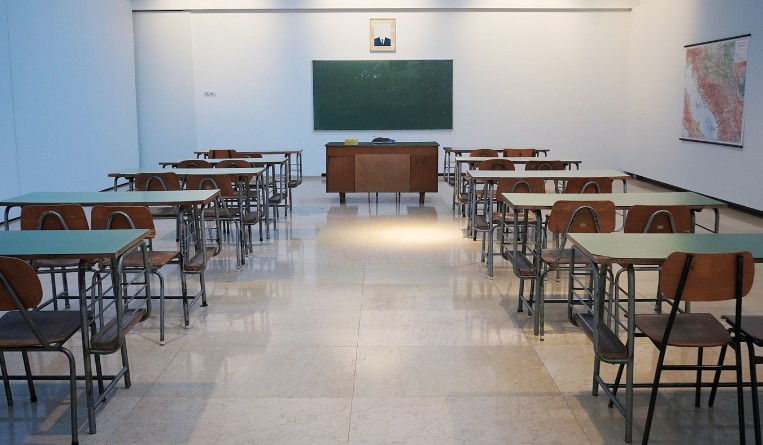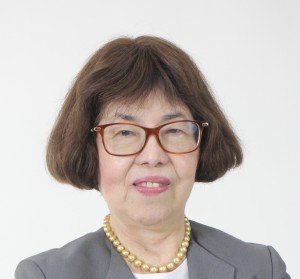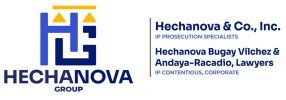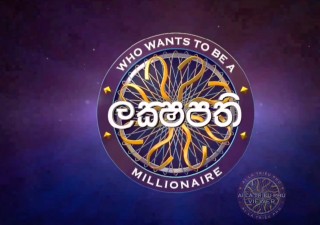IP strategy for education institutions in the Philippines
31 July 2021

As the Philippines works towards fulfilling the United Nations’ Sustainable Development Goals – including one aimed at promoting quality education – Editha R. Hechanova and Misael F. Costes examine how developing an IP strategy for schools can help the country reach its goal.
The Philippines, as a member of the United Nations, committed in 2015 to the 2030 Agenda for Sustainable Development comprising of 17 goals (SDGs) aimed at ending poverty and inequality, increasing the country’s productivity, addressing climate change and protection of the environment; these commitments are monitored by the Philippine Statistics Authority (PSA).
Of the top SDGs, Quality Education comes only as fourth priority, with No Poverty as first, Zero Hunger on second and Good Health and Well-Being on third. With the country’s limited budget, it is expected that most spending toward the SDGs will go to the first three priorities, particularly to health because of the pandemic. In 2020, public spending on education was only 13.5 percent of the budget, which was lower than the 2017 level of 17 percent. In a report of the Programme for International Student Assessment (PISA) by the Organization for Economic Co-operation and Development (OECD) in 2018, 15-year-old Filipino students scored lower in reading, mathematics, and science than most of the countries participating in PISA 2018; no other countries scored lower than the Philippines and the Dominican Republic.
In the Philippines, public primary and secondary education, commonly known as “high-school,” are given free. The basic education system in the Philippines now consists of one year of kindergarten, six years of elementary education, four years of junior high school and two years of senior high school, or 13 years of compulsory education as mandated by the Kindergarten Act of 2012 and the Enhanced Basic Education Act of 2013, which introduced the K-12 programme. However, under the Philippine Constitution, only primary education is compulsory, and secondary education is voluntary. Given the government’s limited budget, the poor performance of Philippine high school students in the PISA, and the adoption of the K-12 programme, it becomes apparent that the private sector must be encouraged to invest in education.
The business of education
The implementation of the K-12 Basic Education Programme, particularly the addition of the Senior High School Programme to secondary education, has provided private individuals, schools, corporations, organizations and foundations increased opportunity to take part in the development of the character and life skills of the Filipino youth. The Senior High School Programme (Grades 11 & 12), as progression from the Junior High School (Grades 7-10), provides practical instruction, work immersion or apprenticeship, and entrepreneurship enabling the students to master concepts and skills to be employable, or to start his or her own business after graduation, or go to college for further education.
Certainly, the government has the mandate to give quality education to its people, but given its limited resources, and the need and growing demand for secondary education, the private sector can step in several ways, e.g., owner, partner, donor. With the introduction of K-12, many private schools have been organized. A Filipino citizen or a domestic corporation, 40% of which can be owned by foreigners, can establish and operate a school for the enhanced basic education, subject to complying with the requirements of the Department of Education.
There is, of course, the long running debate of whether a school should be treated like a business. While the traditional business enterprise’s goal is to maximize profits for its shareholders, this view is evolving as awareness of corporate social responsibility becomes one of its core objectives. Suffice it to say that educational institutions ought to be viewed as a social enterprise where making profits is essential for it to be able to sustain its existence, while serving the public good.
IP strategy
Whether the school is for basic or higher education, whether it is public, private non-profit, or private for profit, intellectual property is central to its continuing growth and that of its stakeholders. The school’s IP system fulfils the functions of: (i) providing rewards for innovation, (ii) identifying intellectual assets and packaging them into protectable and transmissible rights, (iii) disseminating technical information, and (iv) controlling the commercialization of intellectual assets. In this light, the following IP strategies may be considered:
The school must have an IP Policy. Education and law are being outpaced by technology. Children now start their own businesses, post on social media and write blogs, all probably without being aware of intellectual property and its effects on their activities. On a daily basis, a school creates and uses intellectual property, including copyright. As indicated above, the K-12 programme added a two-year specialized upper secondary education where students are allowed to choose a specialization based on aptitude, interests, and school capacity. There are four tracks that each student in senior high school may choose from, namely: academic, technical-vocational-livelihood; sports; and arts and design. Under the academic track, students are required to conduct and submit research works on subjects they have chosen. Such an activity generates materials that are copyrightable. Similarly, the arts and design track cultivates and develops the performative and creative talents and skills of the student, such as song composing, stage performing, illustrating, sculpting, photography or choreography. Copyrightable materials may again be generated in the course of their studies. Unfortunately, almost all secondary students are not aware of the copyrights that are attached to their academic or artistic creations and the benefits that said copyrights provide to themselves and to their schools. The school, therefore, must have a policy with regard to these creations and rights as well as to the ownership and use of the same, and the rewards attached to it. It is the responsibility of the school to inform the students of their copyrights and on how to properly protect them.
The same is true with research and academic creations of teachers. They are not well-informed of the copyrights that are attached to their creations and, without a clear policy on the ownership of the copyrights of the academic creations that are created pursuant to their employments, they do not know how to claim the said right.
With the spread of Covid-19, both public and private schools offering the enhanced basic education have been forced to depart from the traditional face-to-face mode of learning and adopt several alternative modes, such as online learning or e-learning through the use of the internet; modular learning, where learning modules are distributed to the students for use during class sessions and then retrieved after the students have answered the assessment questions therein; or a combination of online and modular modes of learning.
The implementation of alternative modes of learning delivery, which required private schools to produce self-learning modules to be used for online or modular learning, has made an important issue of the protection of copyrighted materials, as well as the infringement thereof. The possibility is high that the modules that were produced by the private school have, in some way, infringed the copyrights of the owners of the materials used as module contents. This again highlights the need for a school intellectual property policy which normally enumerates the measures to be taken to avoid any form of infringement and identifies the competent person or persons to guard against said infringement.
As an example, in a case decided by the Intellectual Property Office of the Philippines, IPOPHL successfully enforced its judgment holding La Concepcion College, a private school located in San Jose del Monte City, Bulacan, liable for copyright infringement. The copyright infringement case arose from the complaint filed by Raymund Sta. Maria Catabijan, author and publisher, who alleged that the school copied his workbooks and sold reproductions thereof to its students. The school was ordered by the IPOPHL to pay Catabijan damages amounting to about US$12,000.
In a more recent case handled by our firm, and posted by ABS-CBN news on February 18, 2021, the Makati Regional Trial Court on November 17, 2020, resolved an 11-year copyright battle between two publishers of education materials, finding EdCrisch International Inc. and its Singapore-based partner Alkem Company liable of copyright infringement after finding that substantial portions of a social science textbook produced by one of the parties were copied from another book, and ordered to pay the complainant, University Press of First Asia, about US$186,000. The decision has been appealed. It was reported that this court decision is the third major copyright case in the Philippines’ education publishing.
Moreover, most secondary schools, public and private, require their students to create and submit projects as part of their practical learning and for passing their subjects. Occasionally, we learn from the news of a student or a group of students winning awards in the country or abroad for creating projects that are worthy of awards or recognition.
In 2019, the Department of Education selected Best Six Projects of the 2019 National Science and Technology Fair (NSTF), sponsored by the Gokongwei Brothers Foundation (GBF). The said projects were selected from the winners of the individual and team competitions under the physical science, life science, and robotics and intelligent machines categories. Also, the Technology Application and Promotion Institute of the Department of Science and Technology (DOST-TAPI), in collaboration with DOST regional offices, annually conducts the search for the outstanding patents or registrations, and research in the country, including outstanding student creative research for high school and college students through the Sibol Award.
The projects, award-winning or otherwise, may be patentable as inventions or registrable as utility models. The said project may also be registrable as industrial designs that can serve as a pattern for an industrial product or handicraft. As such, the novelty or newness of the projects is important and must be maintained so that proper protection from infringement may be acquired. The exposure of the projects to the public without filing applications for their protections within twelve months from the date of their public disclosure destroys their novelty. Lacking novelty, the projects cannot be protected from infringement.
It is, thus, important for secondary schools, both public and private, to give adequate attention to their intellectual property assets and the rights that are attached thereto, and form and adopt a policy for the suitable protection of their intellectual property rights such as trademarks or tradename, copyright, inventions, utility model and industrial design, as well as dealing with internal IP issues such as educating teachers and students, management of researchers, valuation, information dissemination and coordination. An ideal intellectual property policy would include the creation of an intellectual property management office or unit, which is then provided with knowledgeable and competent personnel.
Schools are also encouraged conduct training activities or workshops to familiarize the students and school personnel of intellectual properties and the protection that are provided for them by law. With sufficient knowledge of their intellectual property rights, students and teachers become conscious of their protection not only for their own benefit and that of their schools, but for the public good.
To set aside funds to protect IPs. A school in its start-up phase may not have the resources to employ a full-time IP specialist, or may be spending more time setting-up and marketing its services. However, it may be that it is at this stage where a significant portion of its overall value is lodged in intellectual property, and not paying attention to it could result in failing to consider returns from its IP rights. It could rely on advice from external sources, if this be necessary. As the school increases its resources, this would boost its capability to protect and exploit subsequent innovations.
To monetize its IPs. Admittedly, the main objective of even a private educational institution is not profit, but to be able to sustain its service for the public good, it has to support its existence and give to those who have invested in it reasonable returns that would encourage them to make more investments. In this regard, a school has to be open to licensing deals and alliances to exploit its IPs.
There is investment opportunity for education, particularly, secondary education in the Philippines and for those that have done so, and those thinking about it, should also address intellectual property issues to optimize the use of its resources.









